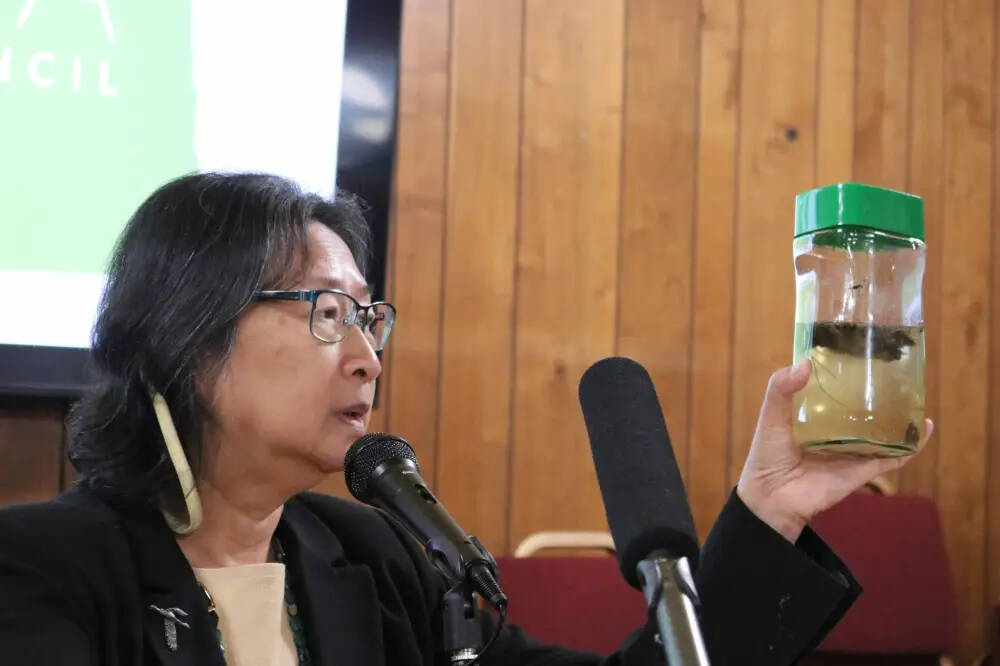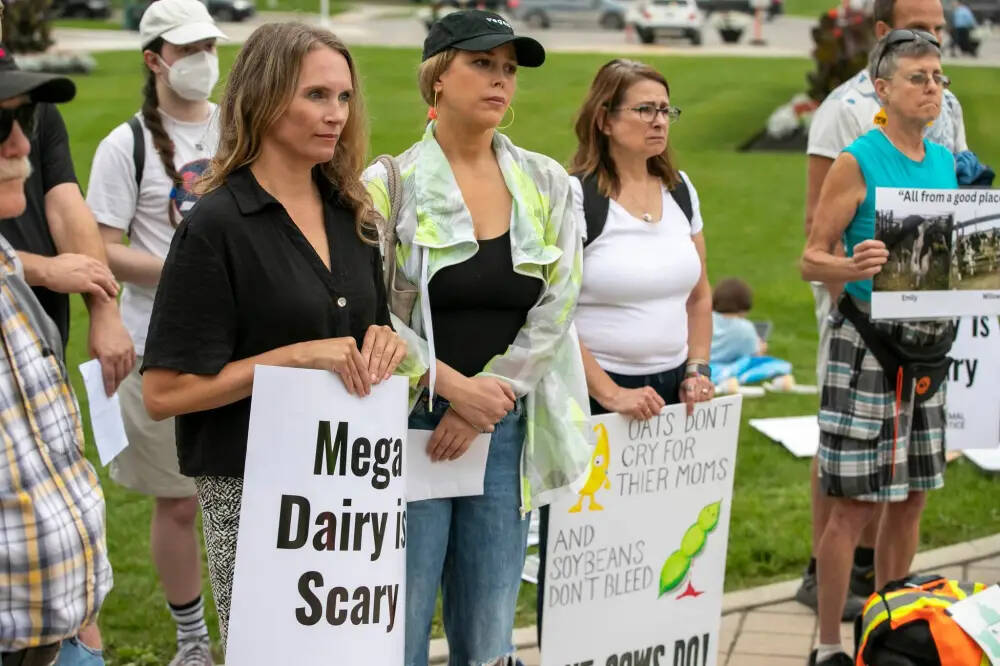North Dakota mega-barns cause alarm
Advertisement
Read this article for free:
or
Already have an account? Log in here »
We need your support!
Local journalism needs your support!
As we navigate through unprecedented times, our journalists are working harder than ever to bring you the latest local updates to keep you safe and informed.
Now, more than ever, we need your support.
Starting at $15.99 plus taxes every four weeks you can access your Brandon Sun online and full access to all content as it appears on our website.
Subscribe Nowor call circulation directly at (204) 727-0527.
Your pledge helps to ensure we provide the news that matters most to your community!
To continue reading, please subscribe:
Add Brandon Sun access to your Free Press subscription for only an additional
$1 for the first 4 weeks*
*Your next subscription payment will increase by $1.00 and you will be charged $20.00 plus GST for four weeks. After four weeks, your payment will increase to $24.00 plus GST every four weeks.
Read unlimited articles for free today:
or
Already have an account? Log in here »
WINNIPEG — The Manitoba government wants a cross-border agency responsible for water issues to ensure Lake Winnipeg isn’t bombarded by pollution from two industrial dairy farms proposed upstream in North Dakota.
On Thursday, the office of Environment and Climate Change Minister Mike Moyes shared a letter he sent to the Canadian and American co-chairs of the International Red River Watershed Board, warning Manitoba “is committed to taking strong action on many fronts to improve the health of the lake and its tributaries.”
The letter raised concerns about what would happen with more than seven million kilograms of phosphorus and nitrogen expected to be produced annually by the 37,500 cows at the proposed farms.

Madeline Luke, ag committee volunteer for Dakota Resource Council, holds a jar containing cattle waste and water that she mixed to represent potential contamination from large-scale dairy operations during a rally in Bismarck, N.D. Thursday. (Jenny Schlect/Agweek)
“When we heard about these really expansive dairy farms, we were quite concerned, which is why we brought it to the attention of the International Joint Commission,” the minister said in an interview Thursday, referring to the agency that deals with water oversight along the Canada-U.S. border.
“Communication and co-operation is paramount in terms of getting a good satisfactory result in cases like these,” Moyes said. “But we want to be really clear that we care deeply about the lake and under no circumstances are we going to just let things that could jeopardize Lake Winnipeg take place.”
Residents on both sides of the border held simultaneous rallies Thursday to protest the mega-barns.
“The two operations will quadruple the size of the herd in North Dakota, and are almost comparable to our entire herd in Manitoba,” said James Beddome, executive director of the non-profit Manitoba Eco-Network, prior to a midday rally attended by about 30 people in front of the Manitoba Legislative Building.
“It doesn’t take a genius to figure out that that’s going to have impacts in Lake Winnipeg,” he said.
In North Dakota, demonstrators delivered a petition to Gov. Kelly Armstrong at the state capital in Bismarck, asking for a meeting to discuss their concerns.
“Water knows no boundaries, so it makes sense that people from North Dakota, Minnesota and Manitoba all work together to save this precious resource,” said Madeline Luke, agriculture committee volunteer for Dakota Resource Council.
The two operations may be “just the beginning of industrial agriculture in the Red River Valley,” Luke warned.
Owned by Riverview Farms, the Richland County Abercrombie Dairy (12,500 cows) and the Traill County Herberg Dairy (25,000 cows) would threaten the Red River watershed, endanger Lake Winnipeg and the drinking water for thousands of people in communities along the Red River Valley, speakers on both sides of the border said.
“We don’t care about those political boundaries, we care about what happens to our natural environment,” Vicki Burns, of the Save Lake Winnipeg Project, told the Winnipeg rally.
The cross-border coalition called on all levels of government to protect public health, clean water, and future generations before any “mega-dairies” move forward.
“Aside from the tremendous animal suffering, the amount of manure that is going to be collected in these mega-dairy barns is equal to about 52 Canadian-sized football fields at a depth of 20 feet every single year,” said Burns, the former executive director of the Winnipeg Humane Society.

A rally to oppose Riverview’s mega-dairies that could threaten the Red River Watershed takes place on the grounds of the Manitoba Legislative Building in Winnipeg, Thursday. (Brook Jones/Winnipeg Free Press)
Lake Winnipeg, the world’s 10th-largest freshwater body, is already showing the impacts of high phosphorus levels from agricultural and urban runoff and sewage, with blue-green algae blooms containing toxins dangerous to humans and animals, Burns said.
“It’s really important for our elected leaders, primarily the federal government, but also our provincial government, to pay attention to this, to ask the International Joint Commission to start getting involved,” Burns said.
“Once it gets going, it’s going to be impossible to stop,” she said of the massive industrial barns. “And Lake Winnipeg really cannot safely bear any more nutrients.”
Moyes said Manitoba’s concerns will be raised at the federal level next week at a meeting of the commission’s International Red River Watershed Board.
It reports on basin activities that affect transboundary river flows, water quality, and ecosystem health in the Red River and its tributaries.
Convincing U.S. politicians that mega-barns are too risky will be a challenge under President Donald Trump who has rolled back environmental regulations, Beddome said.
“We’re less confident of our ability to influence, but doing nothing is not an option, either.”
» Winnipeg Free Press, with files from Jenny Schlect, Agweek
